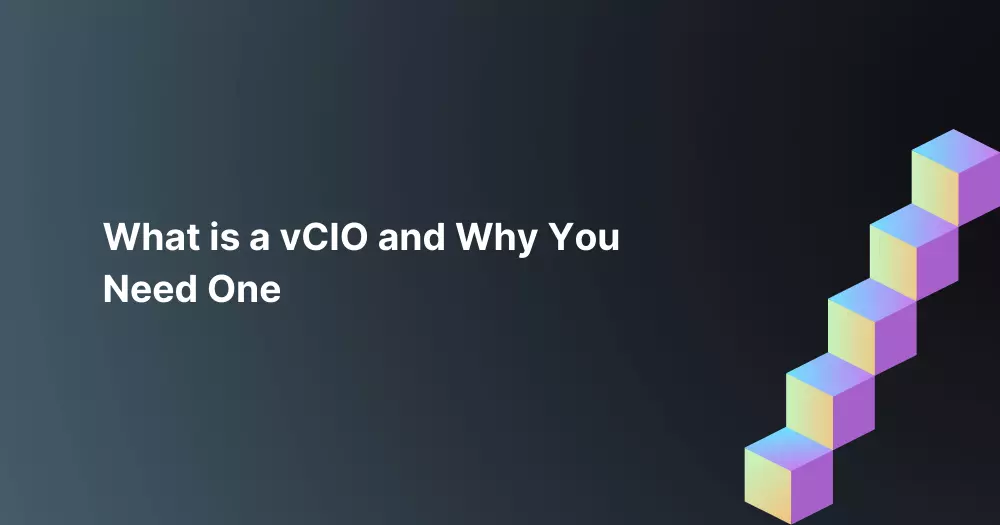
Do you ever wonder about the concept behind cloud computing? You’re probably familiar with the term ‘virtualization’ but fail to grasp its mechanics.
Anywhere you look, there is a sort of virtualization tied to an object or space. By definition, virtualization is an old technology that uses a single physical machine that runs multiple virtual machines within. You move your power around single hardware to cut on physical systems. A great example of virtualization is cloud servers. Many companies use the cloud as an efficient way to consolidate their data and storage. With scalability and cost-benefits of virtualization, it continuously dominates the industry.
In fact, virtualization stimulated the demand for cloud servers and virtual support across industries. It is engraving pressure on Managed Service Providers to offer a virtual Chief Information Officer (vCIO) inclusive of their services. But not everyone is mindful of what this role means and how it benefits them.
A vCIO is a virtual Chief Information Officer who collaborates with a company on a flexible basis. They act as a partner and develop strategic IT goals, roadmap, and budget aligned to business objectives.
Typically, you call your IT provider for help when issues arise. A vCIO leads a team—who can monitor your systems and infrastructure 24/7—preventing anomalies and proactively addressing issues before it affects your operations.
A virtual CIO is in-charge of futuristic views, monitoring technology trends and how it aligns to the future of your organization. They are responsible for recognizing threats and opportunities businesses can prepare for ahead of time.
With a vCIO, your lapses between the organization and the IT department are bridged accordingly. For instance, when your IT team is regularly patching errors, a vCIO is there to identify the causes behind broader concerns such as new software deployment and integration.
Some companies hire both a CTO and a vCIO, but the distinction between the two is that a CIO is responsible for technology organization while the CTO is responsible for solving client-facing technical problems.
A CTO reports to the vCIO and stands as the company’s top engineer. The CIO is responsible for communicating the company’s business needs, and the two of them work together in aligning technology within the organization.
Companies need an expert in managing systems and keeping the operations running with cybersecurity in place. Managers often do not have time to oversee their technologies and sometimes hire someone incompetent or do it themselves. Virtual CIOs manage the entire IT department, ensuring businesses leverage the right technologies to increase revenue while reducing expenses. VCIOs will tell you which applications are futile and purposeful in your business operations.
Systems behave differently. Understanding the data on how systems behave entails technical knowledge. Typically, technical reports consist of bandwidth conditions, fault detection, or mesh network that an average person could not comprehend. One of the roles of a vCIO is to translate the data in layman’s terms. They can explain it to non-technical stakeholders from an angle that makes sense to them. VCIOs also take actionable items from the derived insights. They work hand in hand with you to resolve issues and proactively approach risks.
IT staff have a high churn rate of 13.20%. Hiring a vCIO means they can work with you as long as you want or on a need basis. This kind of setup saves you from recruitment, overarching salary, training expenses, employee benefits, and taxes. Most Managed Service Providers include:
Most small to medium-sized businesses (SMB) does not have the spending capability to hire a full-time vCIO. For SMBs, hiring an in-house vCIO means an additional wage cost of $150,000 annually. This compensation package does not cover benefits, bonuses, and profit-sharing.
While price hinders SMBs to hire an in-house vCIO, there are other options to receive technical guidance. Freelance vCIO charges an hourly rate that starts at $200 and above. On the other hand, there are vCIOs that charge on a subscription basis. Usual rates start from $2,000 to $10,000 a month depending on the organization’s size and service-level agreement.
Technology is the backbone of successful businesses. Emails, video calls, file sharing, invoicing, and content production—all of these involve technology. Without proper guidance on how these technologies help your organization, it would only cause issues along the way such as antagonistic applications or being incapable of keeping up with your processes.
You need a vCIO if you’re experiencing one of the following:
A vCIO is a crucial role in the technology guidance and strategic vision of your organization. Technology planning entails IT maestros to successfully move parts—infrastructure, servers, and applications—congruent with your business goals.
These are some of the things to take into account before hiring a vCIO. If you ticked off one of the items here, schedule a free consultation to understand better how a vCIO can help you.